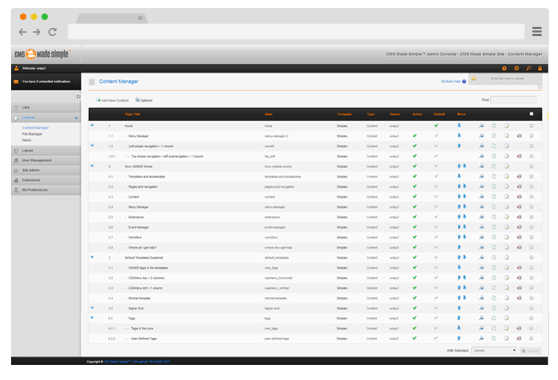Glossary Of ai Terms
Here's a glossary of some of the top terms people should know about AI and machine learning:
- Artificial Intelligence (AI) - The development of computer systems that can perform tasks that normally require human intelligence, such as visual perception, speech recognition, decision-making, and language translation.
- Machine Learning (ML) - A type of AI that involves training a computer system to learn from data, without being explicitly programmed. Machine learning algorithms can be used to make predictions, identify patterns, and automate decision-making.
- Deep Learning - A subfield of machine learning that uses artificial neural networks, which are modeled after the structure of the human brain, to learn from data. Deep learning has been used to achieve state-of-the-art performance on tasks such as image and speech recognition.
- Neural Network - A set of algorithms modeled after the structure of the human brain, designed to recognize patterns in data. Neural networks can be used for tasks such as image and speech recognition, natural language processing, and decision-making.
- Natural Language Processing (NLP) - The ability of computers to understand, interpret, and generate human language. NLP is used in applications such as virtual assistants, chatbots, and speech recognition.
- Computer Vision - The ability of computers to interpret and understand visual information from the world, including images and video. Computer vision is used in applications such as self-driving cars, facial recognition, and object detection.
- Big Data - A term used to describe extremely large datasets that cannot be processed by traditional data processing systems. Big data is often used in machine learning and AI applications to train models and make predictions.
- Data Mining - The process of discovering patterns and insights from large datasets. Data mining techniques are often used in machine learning and AI applications to identify trends and make predictions.
- Supervised Learning - A type of machine learning in which a model is trained on labeled data, meaning the correct outputs are known. Supervised learning is used for tasks such as image classification and speech recognition.
- Unsupervised Learning - A type of machine learning in which a model is trained on unlabeled data, meaning the correct outputs are not known. Unsupervised learning is used for tasks such as clustering and anomaly detection.
- Reinforcement Learning - A type of machine learning in which a model learns through trial and error, by receiving feedback in the form of rewards or penalties. Reinforcement learning is used for tasks such as game playing and robotics.
- Bias - The presence of systematic errors or inaccuracies in data or models, which can result in unfair or discriminatory outcomes. Bias is a major concern in AI and machine learning, and efforts are being made to develop methods to detect and mitigate it.
- Overfitting - A common problem in machine learning where a model is too complex and captures noise or random fluctuations in the data, resulting in poor performance on new data. Overfitting can be mitigated by using techniques such as regularization and cross-validation.
- Underfitting - The opposite of overfitting, where a model is too simple and does not capture the underlying patterns in the data, resulting in poor performance on both the training and test data. Underfitting can be mitigated by using more complex models or by collecting more data.
- Feature Extraction - The process of identifying and selecting the most relevant features or variables in a dataset to use in a machine learning model. Feature extraction is an important step in preprocessing data for machine learning.
- Hyperparameters - Parameters in a machine learning model that are set before training and cannot be learned from the data. Hyperparameters control the behavior and performance of the model and must be tuned to optimize performance.
- Artificial General Intelligence (AGI) - A theoretical type of AI that is capable of performing any intellectual task that a human can do. AGI would be able to reason, learn, understand natural language, and solve complex problems.
- Transfer Learning - A technique in which a machine learning model is trained on one task and then used to improve performance on a related task. Transfer learning can help to reduce the amount of labeled data required for training and improve the generalization of models.
- Deep Reinforcement Learning - A type of machine learning that combines deep learning and reinforcement learning. Deep reinforcement learning algorithms use artificial neural networks to learn from trial and error, by receiving feedback in the form of rewards or penalties.
- Adversarial Machine Learning - A subfield of machine learning that focuses on the security of AI systems. Adversarial machine learning techniques involve intentionally creating misleading data to test the robustness of AI systems.
- Generative Adversarial Networks (GANs) - A type of deep learning model that is used for generative tasks such as image and video synthesis. GANs consist of two neural networks that are trained together, one to generate new data and the other to distinguish between real and fake data.
- Autoencoder - A type of neural network that is used for unsupervised learning tasks such as feature extraction and dimensionality reduction. Autoencoders consist of an encoder that compresses the input data and a decoder that reconstructs the original data from the compressed representation.
- Convolutional Neural Network (CNN) - A type of neural network that is used for image and video recognition tasks. CNNs use convolutional layers that are designed to detect patterns and features in images.
- Recurrent Neural Network (RNN) - A type of neural network that is used for sequential data such as time series and natural language processing. RNNs use recurrent connections that allow information to be passed from one time step to the next.
- Ensemble Learning - A technique in which multiple machine learning models are trained on the same task and their predictions are combined to improve performance. Ensemble learning can help to reduce overfitting and improve generalization.
- Hyperparameter Optimization - The process of finding the best values for the hyperparameters of a machine learning model. Hyperparameter optimization can be done manually or using automated techniques such as grid search, random search, and Bayesian optimization.
- Data Augmentation - A technique in which new training data is generated by applying transformations such as rotation, scaling, and cropping to the existing data. Data augmentation can help to increase the amount of labeled data available for training and improve the generalization of models.
- Natural Language Generation (NLG) - The process of using AI to automatically generate human-like language. NLG is used in applications such as chatbots, content creation, and report generation.
- Transferable Knowledge - Knowledge that can be applied to new situations or domains. Transferable knowledge is a key concept in AI and machine learning, as it allows models to generalize beyond the specific data they were trained on.
- Semi-Supervised Learning - A type of machine learning that combines labeled and unlabeled data for training. Semi-supervised learning can help to reduce the amount of labeled data required for training and improve the generalization of models.
- Active Learning - A technique in which a machine learning model is trained on a small amount of labeled data and then selects the most informative data points for labeling by a human expert. Active learning can help to reduce the amount of labeled data required for training and improve the performance of models.




